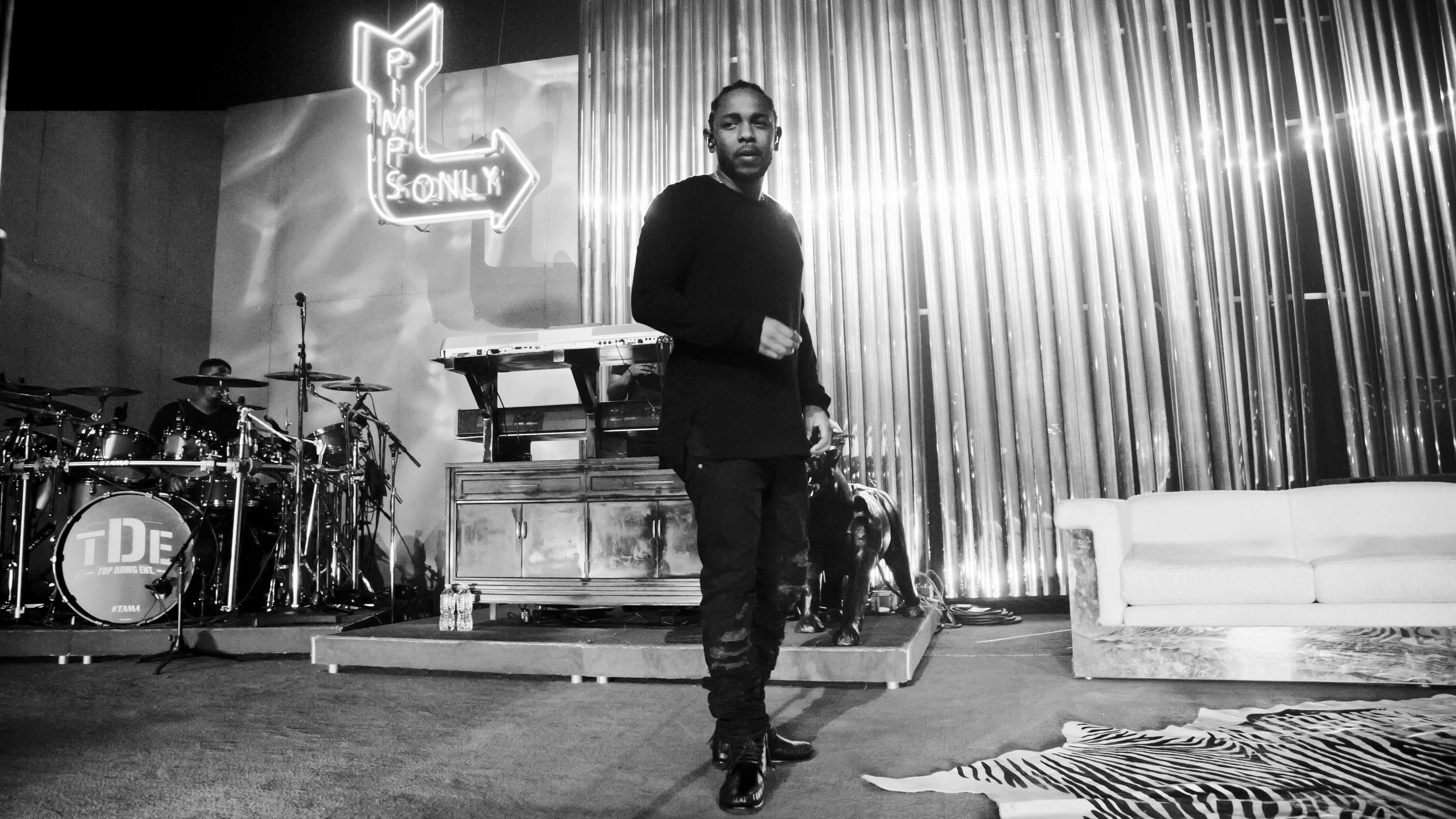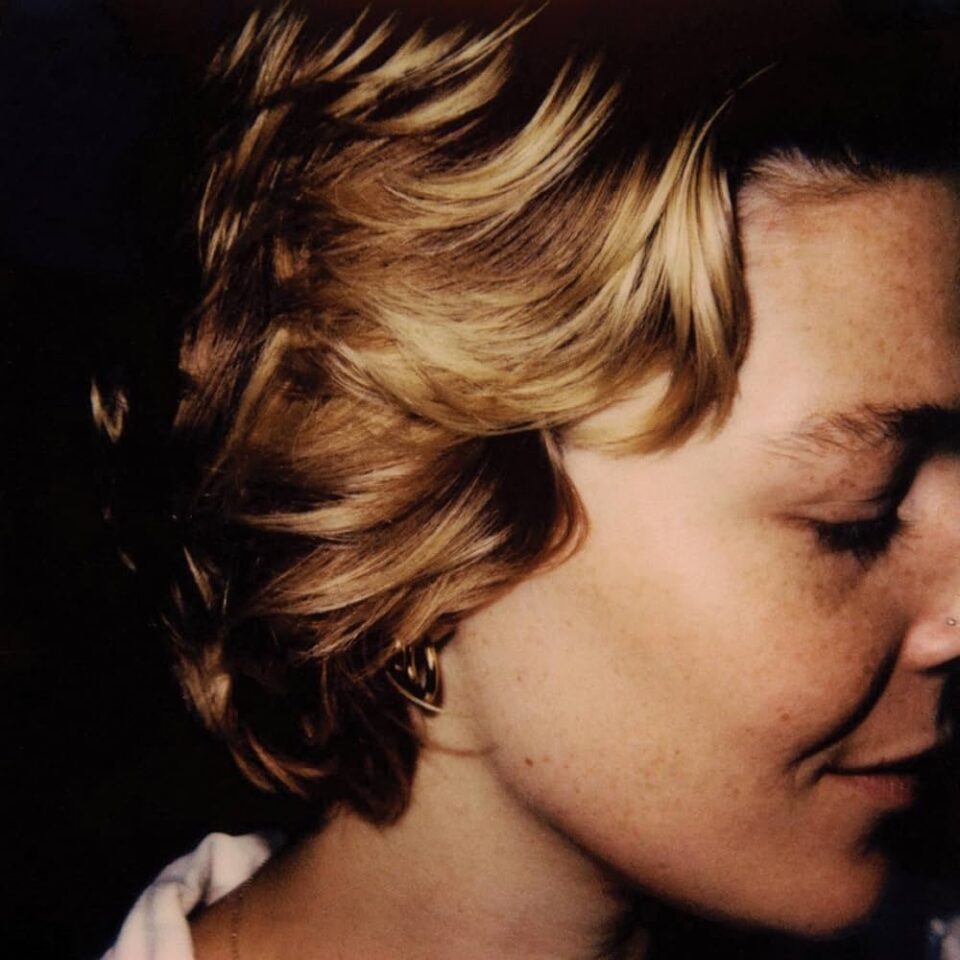I’m not sure what Kendrick Lamar wants. And this lack of knowing is what makes seeing him live on the intimate Kunta’s Groove tour such a compelling, bewitching, and moving experience. A third of the way through the set, having just rolled out “Hood Politics,” Lamar guides the crowd through “Complexion” with an old pan-racial platitude about not caring whether his audience is brown, black, yellow, white, or purple, that the love of good music is what brings us together. And in a certain sense, that’s been true of this evening in the 2500-seat Riviera Theater on Chicago’s North Side, a part of the world not exactly known for its ability to bring together people of different races. The crowd, which seems to be equally split between black and white, has at this point already provided a deafening backing vocal for “Backseat Freestyle,” which was given further ironic muscle by Kendrick’s outrageously loud four-piece band, Wesley’s Theory; in a few moments, the group will ignite the room with “Money Trees” and “i,” and the line between the watery Beach House and Isley Brothers samples in those two songs will suddenly seem very thin and superficial indeed.
But we’ve also provided the backing for the chorus of the song Kendrick’s band is named for, To Pimp a Butterfly’s opening track and the second song he plays tonight. On the record, it’s not necessarily an easy listen, but the beat, courtesy of Flying Lotus, shuffles you from verse to verse with so many bells and whistles that it’s easy to let that chorus—“We should’ve never gave n—— money”—flow past you. At the Riviera, it’s impossible to ignore. It is riotous. And it’s celebratory, in a certain sense; there’s great joy emanating not only from Kendrick but from the audience as it shouts those words back at him, this African-American man who has suddenly found himself sitting atop a pile of cash because of his ability to articulate this very complex situation.
The song is an ironic treatment of the perceived inability of young African-Americans to hold onto their money. It’s also an indictment of African-Americans who do exactly that. For white audience members like myself, it’s an uncomfortable reminder of our legacies and the prejudices that persist despite our intermittent efforts. But for black audience members, it’s a wild affirmation of progress and of power—if this is what white society is thinking, it’s too late for them to save themselves. That affirmation is a joyful, liberating thing to witness.
Listening to To Pimp a Butterfly can be a purely theoretical experience, in the same way that racial relations in Chicago are often purely theoretical; by its very nature as a piece of recorded music, the album, like the famously segregated city, can only come so far in its confrontation. When I listen to it alone in my house—as I have done many, many times since it was released in March—I’m not always hearing Kendrick’s powerful commentary. I’m hearing Kamasi Washington’s arrangements, I’m hearing the Sufjan Stevens samples, I’m hearing Thundercat’s liquid bass and Kendrick’s liquid flow.
The Kunta’s Groove sessions force a confrontation with To Pimp a Butterfly‘s blackness that’s much easier for a white listener to ignore when he just feels like grooving on “King Kunta” in his car.
The Kunta’s Groove sessions don’t do away with those things—this is live music, first and foremost, and it would be selling Kendrick’s band and the man himself short to pretend like they are anything other than incredible showmen and entertainers—but they force a confrontation with the album’s blackness that’s much easier for a white listener to ignore when he just feels like grooving on “King Kunta” in his car. Unlike the 80,000-person open-air festivals that he routinely headlines these days, the small venues don’t give the message any escape route. And if making the album was a kind of therapy, as Kendrick says on stage, then recreating it together in such a small space has to be therapeutic for anyone in the audience, black or white, who’s paying even the smallest amount of attention to what they’re saying.
Which doesn’t mean that it comes easily. This goes beyond the question of whether or not to say the “N” word when you’re rapping along. What do you do with a song like “Wesley’s Theory”? What do you do with the phrase “Hands up!”, particularly if it’s not followed by “Don’t shoot!”? Are we participants, or are we witnesses? The intimacy—not only of the performance, but of the crowd itself—makes these questions feel immediately important. To even be able to ask them feels strange, as if the “right” to say a particular word or to dance in a certain way should trump, like, anything.
In fact, at the Riv, Kendrick drops the “N” word from the pre-chorus of “Alright,” easily his most visible song at the moment, whose chorus was repurposed as a protest anthem over the summer. The moment he finishes his main set, the chanting begins: “We gon be alright/We gon be alright,” shouted with a ferocity of purpose, though whether that purpose is protest or rejoinder or hope or celebration or simply because you know the words probably differs from person to person. Is that alright?
After Kendrick’s performance of the song on the BET Awards prompted Geraldo Rivera to declare hip hop more corrosive to black life in the US than racism, the rapper told TMZ (of all places) “You can’t take away our hope and our privilege that things will be okay at the end of the day.” And at the end of the night, with everyone chanting his words, Kendrick comes out and shouts at the crowd to go louder, louder, raising his hands in exhortation. I feel comfortable saying that it’s the loudest I’ve ever heard a crowd chant anything at a concert, and just when it begins to feel like we’re in the middle of a moment, he does a strange thing. He tells everyone to bring it down—a little bit softer now, a little bit softer now—and suddenly we’re “only” having fun. And when his band finally launches into the song, he lets the crowd take care of the intro and doesn’t jump in until just before the drop: “I’m fucked up, homie, you’re fucked up, but if God’s got us, then we gon be alright.” And the whole lot of us bounce along, because there’s nobody here who doesn’t need healing. FL









